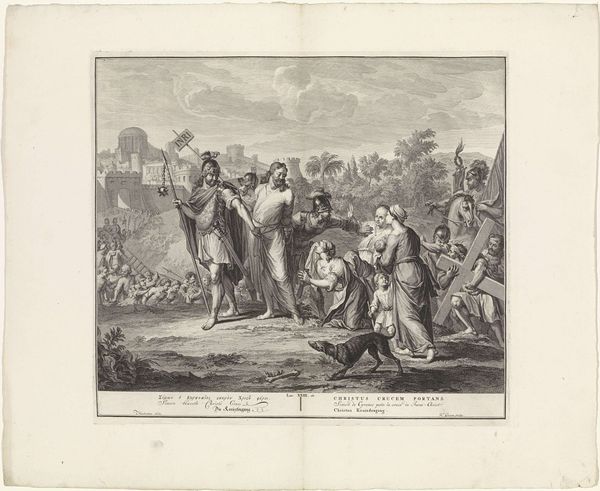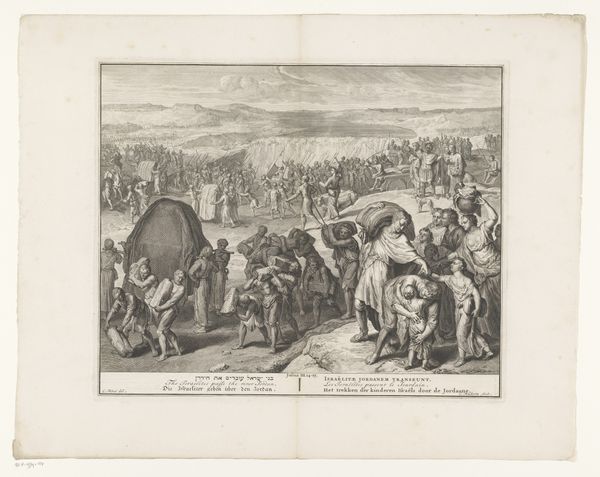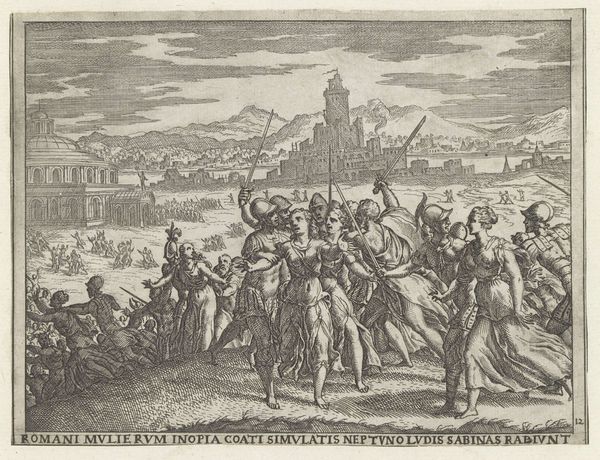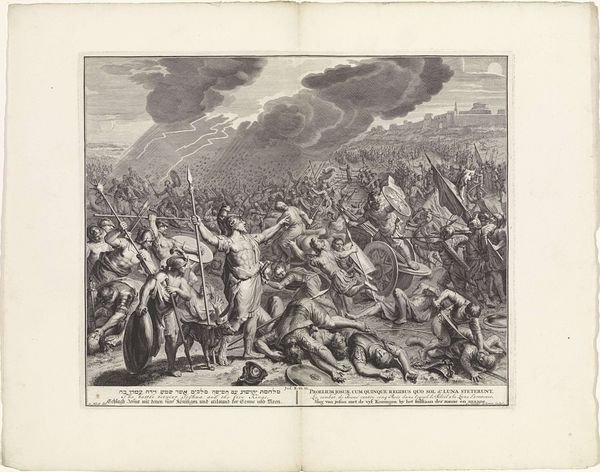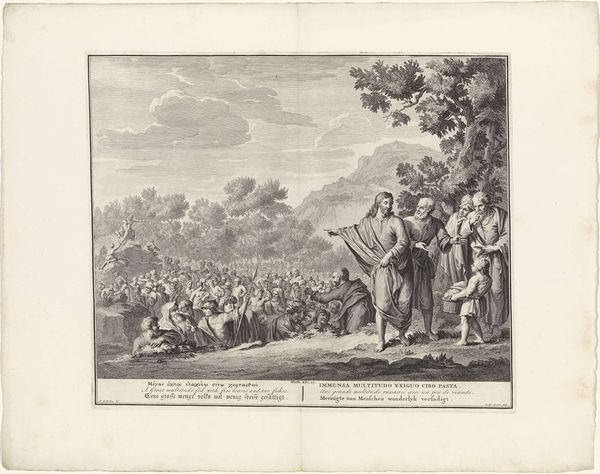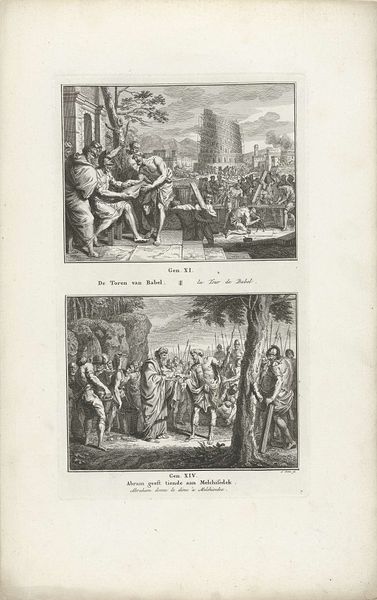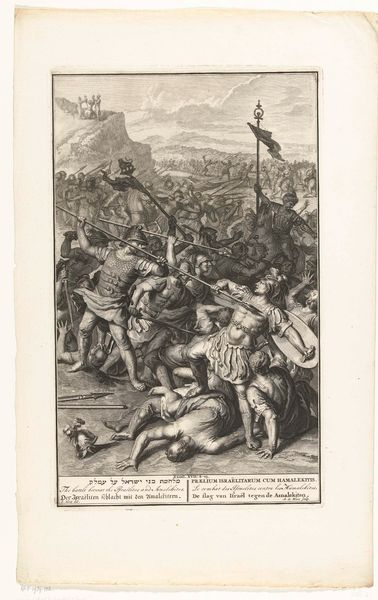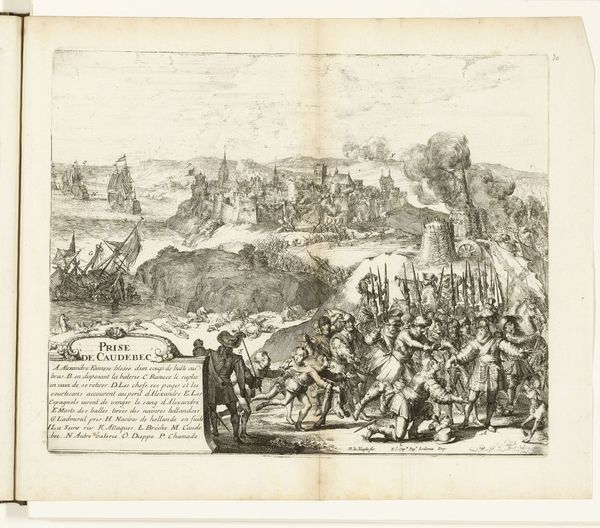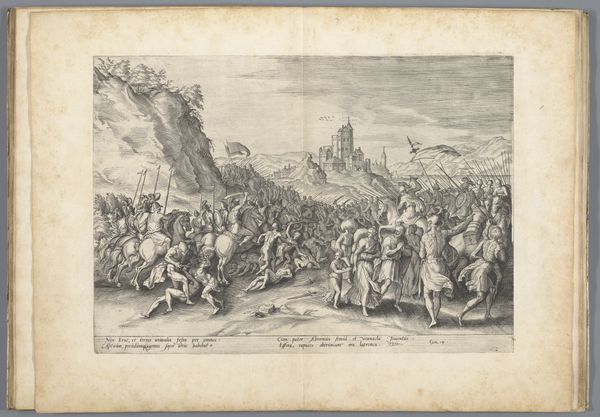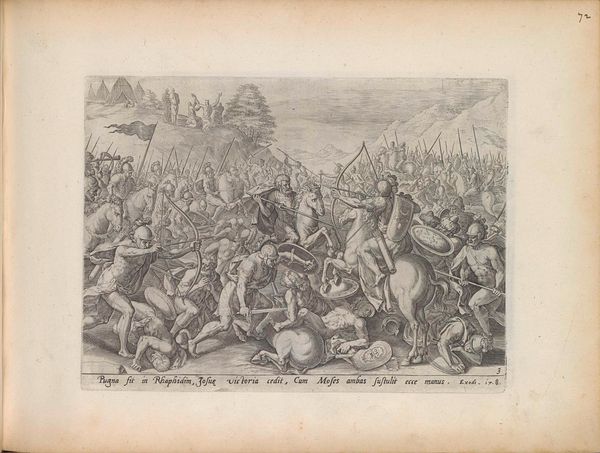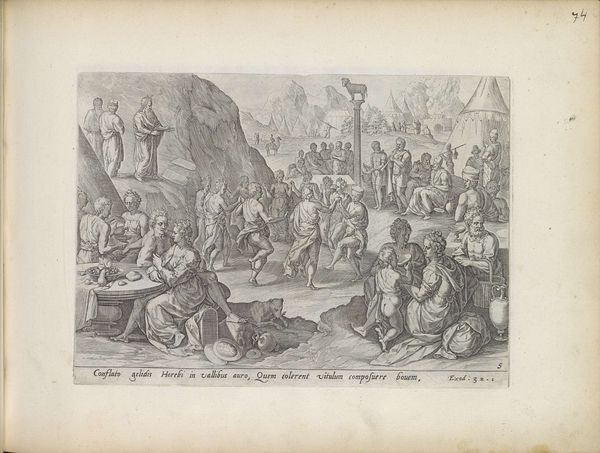
print, engraving
#
narrative-art
#
baroque
# print
#
figuration
#
line
#
cityscape
#
history-painting
#
engraving
#
realism
Dimensions: width 428 mm, height 350 mm
Copyright: Rijks Museum: Open Domain
Gilliam van der Gouwen made this print, The Destruction of Jericho, sometime before his death in 1740 using etching. The print depicts the biblical story of the Israelite siege of Jericho, where the city's walls crumble after Joshua's army marches around it for seven days with priests blowing trumpets. Van der Gouwen’s image offers insight into the religious and political climate of the Dutch Republic. The Dutch identity was strongly tied to Protestantism and narratives of divine intervention. Biblical scenes like this one were used to teach moral lessons and reinforce a sense of national identity rooted in religious conviction. Prints like this were widely circulated and consumed, reflecting a public that was deeply engaged with religious narratives. Art in this period played a significant role in shaping cultural values and reinforcing social norms. To truly understand this piece, one might delve into the history of Dutch Protestantism, the economics of the print market, and the political uses of biblical imagery. The meaning of art is contingent on social and institutional context.
Comments
No comments
Be the first to comment and join the conversation on the ultimate creative platform.
